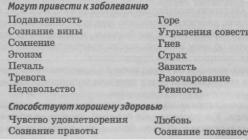This means that it is possible to use the capabilities of the brain, even if they were not available before. A teacher of the deaf is a specialist who teaches lip reading.
If you can’t go to study with him, you can use various recommendations, and most importantly, train.
Learning to read lips together is much easier. Find a companion who will read from a book or magazine while you look at him. Try to understand what the person is saying. The main thing is that he pronounce the words clearly, without making sounds. Many people correctly use their lips only in the process of speech production, but when simulating this process they make mistakes. There is a simple solution - take headphones, put them on, and let your partner read the text in a whisper.
Each student has their own homework, which consists of reading the text independently. You need to not only pronounce words, but also learn to quickly grasp how you do it with your lips. The ideal option is to place a large mirror in front of you, in which you can repeat the text, seeing the movement of your lips and facial expressions, as well as perceiving the meaning, as well as the technical component of the words.
How to learn to read lips yourself
- Recite the alphabet in front of the mirror. These letters should be in direct sequence, alphabetically, or in the form of words and sentences.
- If you can’t read the words, but you understand that you can already distinguish the letters, go to the intermediate lesson - pronounce the syllables in the mirror.
- Remember what movie or TV series you have already watched, but you liked it so much that watching it again would only please you. Great, turn on the recording, first with sound, then turn it off. Try reading lips. Knowing the meaning behind words will make it easier for you to understand them. And the movement of your lips in this case will become a hint, which is also useful in the learning process until you are fully able to perceive accurate information from your mouth.
- Consider emotions. If speech is not always clear only from the lips, then in combination with facial expressions it is easy to determine at least in what direction a person is speaking, whether it is negative or positive, a real story or humor, what sensations he experiences.
By training every day for at least half an hour to an hour, you will learn to read lips in about a month or two.
Try to close your ears and guess what your interlocutor or TV announcer is telling you. You will probably find that you can understand some words without hearing the sound at all. This is called lip reading. Lip reading can be a game, but for some it may be the only way to obtain information.
We may never realize it, but even people with normal vision, hearing, and verbal communication skills subconsciously use lip movement and facial expression information in addition to auditory comprehension in everyday conversation. The fastest fluent speakers can sometimes be understood by reading their lips.
In speech perception there is a connection between auditory information and visual information, and this shows its multimodality, that is, that it involves more than one sensory modality, for example, only sound. Yes, you can communicate without hearing your voice by reading lips. True, both sound without a visual component and vision itself without sound will provide only part of the picture. From time to time we will not be able to understand what we see. Why? What are the main problems in lip reading?
Each speech sound (phoneme) has a specific facial expression, mouth position, and lips (viseme), although many phonemes are divided into the same visemes. As a result, it turns out that it is impossible to distinguish one viseme from another using visual information alone. These are glottal or posterior fricative consonants whose place of articulation in the mouth or throat is not visually detectable.
In Russian, voiceless and voiced sound pairs look identical, such as [p] and [b], [k] and [g,x], [t] and [d], [f] and [v], and [s ] and [h], [f] and [w]; similarly for nasal [m], [n] sounds. It was thought that only 30% to 40% of English sounds are visually distinct. For example, in most English dialects, the phrase "where there"s life, there"s hope" looks identical to the phrase "where"s the lavender soap."
Thus, context is important in lip reading. It is important to know what will likely be said, to take into account the situation, the environment. The speaker's remarks will be interpreted primarily in this context, and he must take this into account, since phrases and expressions that are disconnected in meaning and do not support the context, such as the name of a person never met before, may not be understood or even misunderstood.
A lip reader who is congenitally deaf may never have heard spoken language. He is unlikely to be a fluent language user, which makes lip reading much more difficult for him. Additionally, lip reading requires a lot of concentration and can be extremely tiring. For these and other reasons, many deaf people choose to use other means of communication with those who do not speak sign language, such as signing, mime, or sign language interpreters.
When talking to a lip reader, exaggerated articulation is not at all helpful and can even distort useful information. However, you can learn to emphasize important words and expressions - this is called speaking with your lips.
When there are difficulties in perceiving lip reading:
- when the speaker’s lips are not clearly visible. This includes obstructions such as a mustache or hands in front of the mouth;
- the speaker's head is turned to the side or the person has turned away;
- a bright light source, such as a window behind the speaker, that creates backlight so that the face is not visible;
- conversation in a group of people, in a company, especially when a lot of people are talking and quickly replacing each other.
- when the speaker has unclear articulation or pronunciation defects
Quote from "The Listening Eye", Dorothy Clague, 1953: "When you are deaf, you live in a well-corked glass bottle. You see the wonderful outside world, but it does not reach you. After learning to read lips, you are still in the bottle , but the plug has come out and the outside world is slowly but surely coming towards you.”
In the next article we will pay attention to such a little-known communication system as sign language (Cued Speech). This system is present in many languages, but not in Russian. It can be described as articulatory gestures, but in a certain sense. These are special gestures that are made near the mouth and only help lip reading. Now we find it difficult to give a definition for translation from English of this Mouth-Hand System, which includes Cued Speech.
Commander Dave Bowman and co-pilot Frank Poole, not trusting the computer, decided to disconnect it from controlling the ship. To do this, they confer in a soundproof room, but HAL 9000 reads their lips. Still from the film “2001: A Space Odyssey”
Lip reading plays an important role in communication. Even experiments in 1976 showed that people “hear” completely other phonemes when the incorrect sound is superimposed on the movement of the lips (see "Hearing lips and seeing voices", Nature 264, 746-748, 23 December 1976, doi: 10.1038/264746a0).
From a practical point of view, lip reading is an important and useful skill. You can understand your interlocutor without turning off the music in your headphones, read the conversations of all people in your field of vision (for example, all passengers in the waiting room), listen to people through binoculars or a telescope. The scope of the skill is very wide. A professional who has mastered it can easily find a high-paying job. For example, in the field of security or competitive intelligence.
Automatic lip reading systems also have rich practical potential. These are new generation medical hearing aids with speech recognition, systems for silent lectures in public places, biometric identification, systems for covert information transmission for espionage, speech recognition from video footage from surveillance cameras, etc. Eventually, computers of the future will also read lips, like HAL 9000.
Therefore, scientists have been trying to develop automatic lip reading systems for many years, but without much success. Even for the relatively simple English language, in which the number of phonemes is much smaller than in the Russian language, recognition accuracy is low.
Understanding speech based on human facial expressions is a daunting task. People who have mastered this skill try to recognize dozens of consonant phonemes, many of which are very similar in appearance. It is especially difficult for an untrained person to distinguish between the five categories of visual phonemes (that is, visemes) of the English language. In other words, it is almost impossible to distinguish the pronunciation of some consonant sounds from the lips. It's no surprise that people are very bad at reading lips accurately. Even the best among the hearing impaired demonstrate accuracy of only 17 ± 12% of 30 monosyllabic words or 21 ± 11% of multisyllabic words (hereinafter results for English).
Automatic lip reading is one of the computer vision tasks, which comes down to frame-by-frame processing of video footage. The task is greatly complicated by the low quality of most practical video materials, which do not allow one to accurately read the spatiotemporal, that is, spatiotemporal characteristics of a face during a conversation. Faces move and turn in different directions. Recent developments in computer vision attempt to track the movement of a face in a frame to solve this problem. Despite their successes, until recently they were only able to recognize individual words, but not sentences.
Developers from Oxford University have made a significant breakthrough in this area. The LipNet neural network they trained became the first in the world to successfully recognize speech from lips at the level of entire sentences by processing video footage.

Frame-by-frame salience maps for the English words “please” (top) and “lay” (bottom) when processed by a neural network that reads lips, highlighting the most attention-grabbing (salient) features
LipNet is a recurrent neural network of the LSTM (long short-term memory) type. The architecture is shown in the illustration. The neural network was trained using the neural network temporal classification method (Connectionist Temporal Classification, CTC), which is widely used in modern speech recognition systems, since it eliminates the need to train on a set of input data synchronized with the correct result.

Architecture of the LipNet neural network. The input is a sequence of frames T, which are then processed by three layers of spatiotemporal convolutional neural network (STCNN), each of which is accompanied by a spatial sampling layer. The extracted features are upsampled on the time scale and then processed by double LTSM. Each time step in the LTSM output is processed by a two-layer feedforward network and the final SoftMax layer
On a special corpus of GRID proposals, the neural network shows a recognition accuracy of 93.4%. This not only exceeds the recognition accuracy of other software developments (which are listed in the table below), but also exceeds the lip reading performance of specially trained people.
The special GRID case is composed according to the following template:
command(4) + color(4) + preposition(4) + letter(25) + digit(10) + adverb(4),
Where the number corresponds to the number of word options for each of the six word categories.
In other words, an accuracy of 93.4% is still a result obtained in greenhouse laboratory conditions. Of course, when recognizing arbitrary human speech, the result will be much worse. Not to mention analyzing data from real video footage, where the person’s face is not filmed close up in excellent lighting and high resolution.
The operation of the LipNet neural network is shown in the demo video.
Every person has hidden abilities and talents that he does not use. For example, the ability to understand speech from lips is one of the hidden human qualities. People who have hearing problems or are deaf have this talent from birth, or they try to develop this skill as much as possible, since it is vital for them.
If we try to master this ability and learn to read lips, then communicating in a noisy place or during an exam will not present any difficulty.
If you do not have the opportunity to make an appointment with a teacher of the deaf, then lip reading training can be organized at home.
- First, you need to go to the mirror and clearly and expressively pronounce the entire alphabet. You need to mark and write down those letters whose sound can be unambiguously determined by the movement of the lips (in particular, such as B, P, M), and whose sound is almost indistinguishable.
- After this, you should move on to pronouncing and memorizing the syllables in front of the mirror. Syllables such as FO, FU, FY, FA, PA, PY, PU, PO, SHA, SHO, SHU, SHI are clearly distinguishable on the lips; the movement of the lips during the pronunciation of these syllables should be well studied and remembered.
- When we learn to read all the individual letters and most of the syllables from our own lips, we can begin the next lip reading lesson at home. You should find a recording of a movie or show that you know well. Watch this film or program without sound, paying attention to the movement of the lips of the people being filmed. At first, you can turn on subtitles to make the lesson easier.
- Try to read not only “lips”, but also “faces”. Since the face also displays a lot of information, it helps to understand the context of what is being said. Watch the movement of the eyebrows, watch how they show horror or surprise. Watch how the muscles in the cheeks move when the speaker expresses disgust, etc.
By following all these instructions, you will soon notice that reading lips does not give you any trouble.
How else can you help yourself master this skill?
Did you know that loved ones and friends can also help you learn to read lips? Ask another person to say expressive phrases and sentences to you every day without sound, while you try to understand the meaning of these words. In general, you can learn to read lips anytime and anywhere - in a cafe, on the subway, on the street, at work, on vacation - just watch people you don’t know from afar, their lips, try to understand what they are talking about.
As a final note, also try using the computer lip reading program ReadmyQuips, which is a system of video and audio lessons.  At the moment, ReadmyQuips lip reading program is only in the development stage, but why not try taking part in trial tests of the program?
At the moment, ReadmyQuips lip reading program is only in the development stage, but why not try taking part in trial tests of the program?
You can only learn to read lips if you practice daily for a long period of time, since it is a very difficult task to be able to recognize the meaning of words without sound from different people. The main thing is to first learn to read lips among those around you - friends, family, colleagues, acquaintances, and only after that you will be able to understand strangers. But remember, as with any other acquisition of knowledge, there are people who are great at something, but not so good at something else. How you learn to read lips depends directly on your individual abilities. As they say, you can’t jump above your head.
Good luck to you in your self-development!
In this article we will talk about ways to learn to read lips. Let’s omit those cases when this skill is a vital necessity due to poor hearing or lack thereof, since this is what teachers of the deaf do, and let’s touch on those who simply want to master this skill in order to obtain additional information, out of simple interest, etc.
How to learn to read lips?
Anyone can learn to read lips if they have the desire. If a person who wants to master this skill has enough patience, then over time it is possible to learn this and, moreover, bring the ability to read lips to fantastic heights.
The most accessible and common teaching methods:
- The first thing you can resort to is practicing in front of a mirror. You need to carefully study the articulation of the letters you pronounce. It is important to remember everything: the position of the lips and tongue at the beginning of pronunciation, when pronouncing the letter itself, and the position at the end. After studying the articulation of all letters, you can move on to syllables and then words.
- They will help you master the technique of reading lips. Turn on a movie you know well and carefully follow what the characters say, but turn off the sound completely. After familiar films, complicate the task and move on to those films that you see for the first time.
- You can arrange unique lip reading lessons with your relatives. Ask them to speak to you silently, slowly and clearly at first, and then at a normal pace. You will have to guess the words, phrases and sentences they pronounce.
- Once you achieve more or less tangible results, you can move on to monitoring people in public places: parks, cafes, or simply on public transport on the way to work.
Remember, everything is achievable if you strive for it



